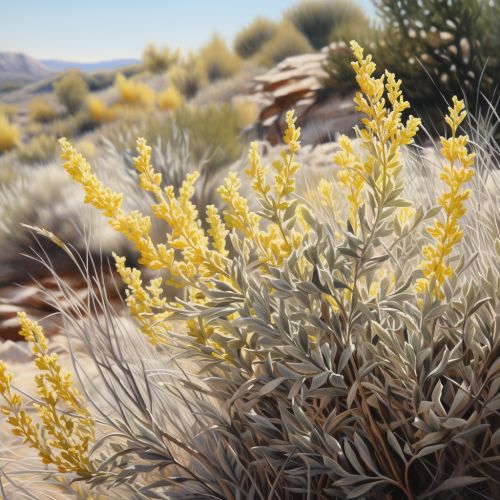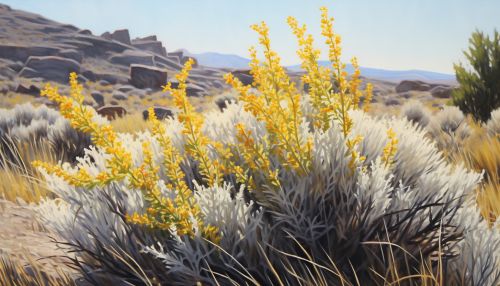Sagebrush
Introduction
Sagebrush, also known as Artemisia tridentata, is a perennial shrub native to the western regions of North America. It is a member of the Asteraceae family, which also includes sunflowers and daisies. Sagebrush is characterized by its silvery-gray leaves and pungent aroma, and plays a critical role in the ecosystems where it is found.


Description
Sagebrush typically grows between 1 and 3 meters in height, although some species can reach up to 4 meters. The plant's leaves are covered in fine, silvery hairs, which help to reflect sunlight and reduce water loss. The leaves are typically wedge-shaped, with three 'teeth' at the tip, hence the species name tridentata. The flowers of the sagebrush are small and yellow, and typically bloom in late summer or early fall.
Distribution and Habitat
Sagebrush is found throughout the western United States, as well as parts of Canada and Mexico. It is most commonly found in arid and semi-arid regions, such as the Great Basin and the Mojave Desert. Sagebrush is a hardy plant, capable of surviving in harsh conditions with poor soil and little water. It is often the dominant plant species in the ecosystems where it is found, forming extensive sagebrush steppe ecosystems.
Ecology
Sagebrush plays a critical role in the ecosystems where it is found. It provides food and habitat for a wide range of wildlife species, including the Greater Sage-Grouse, which relies on sagebrush for food and nesting sites. Sagebrush also plays a key role in nutrient cycling, helping to enrich the often poor soils of the arid regions where it is found.
Uses
Historically, sagebrush has been used by indigenous peoples for a variety of purposes. The plant's leaves were used for medicinal purposes, such as treating colds and headaches. The wood of the sagebrush was used for making tools and building materials. Today, sagebrush continues to be used for similar purposes, and is also used in landscaping and restoration projects.
Conservation
Despite its wide distribution, sagebrush ecosystems are under threat from a variety of factors. These include habitat loss due to development, invasive species, and climate change. Efforts are being made to conserve and restore sagebrush ecosystems, including the use of controlled burns and targeted grazing to manage invasive species.
